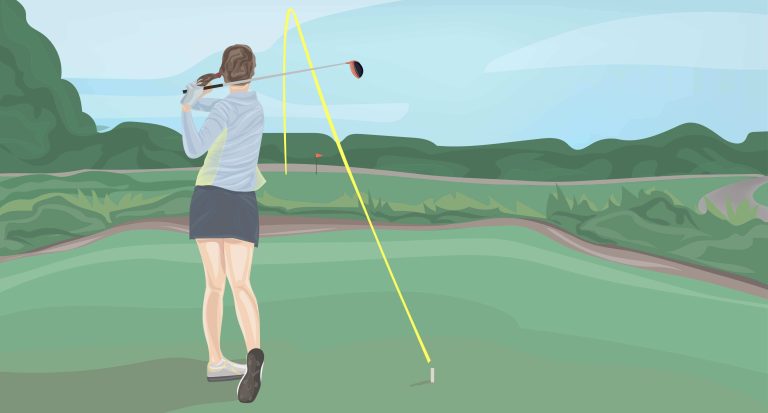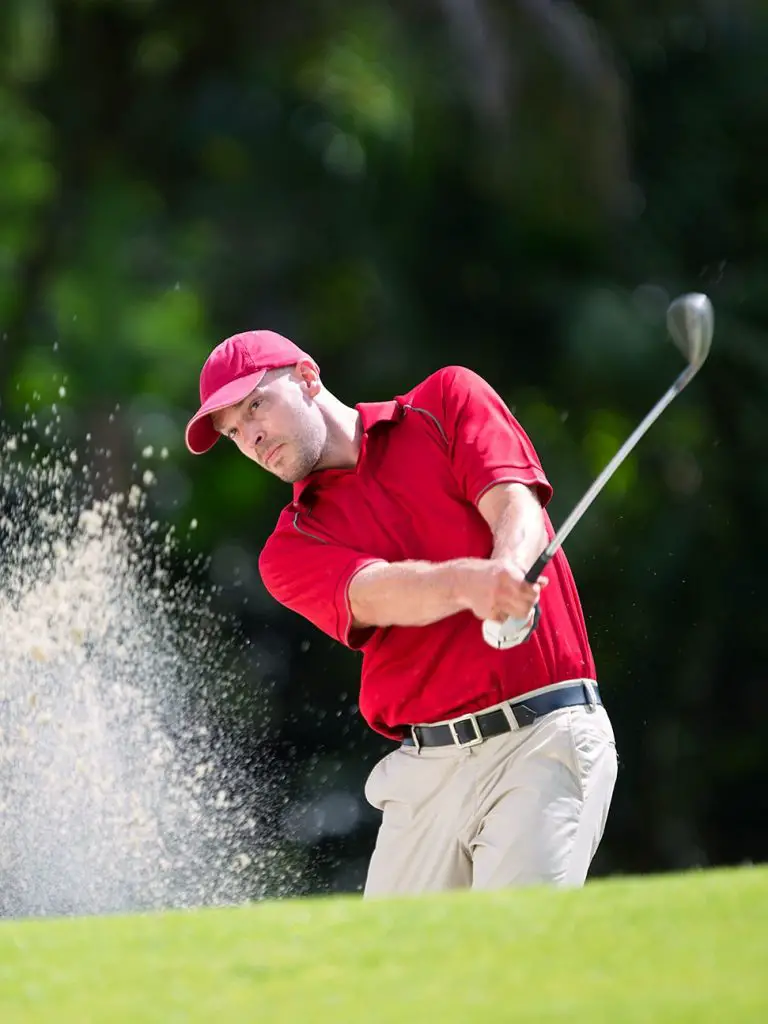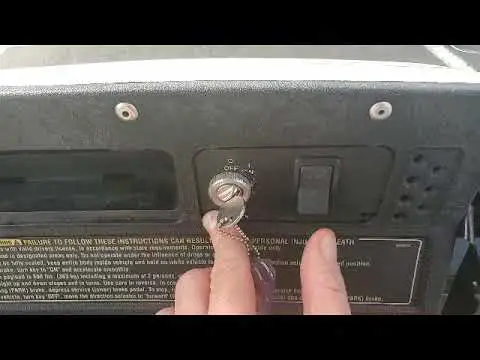How Does Changing Loft Affect Face Angle
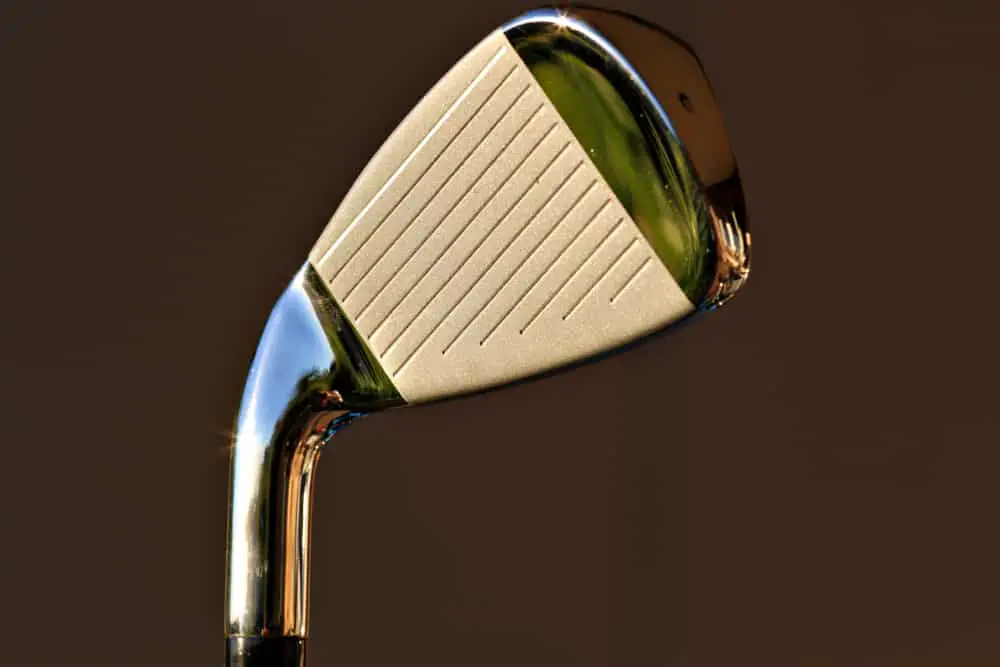
The game of golf is a delicate balance between art and science, where the tiniest adjustments can make a world of difference in shot performance. One such critical relationship is between loft and face angle. Loft refers to the angle of the clubface relative to the ground, while face angle indicates the direction in which the clubface points at impact. Understanding how changing loft affects face angle is key to unlocking the full potential of your golf swing.
In this comprehensive guide, we will delve into the fascinating dynamics between loft and face angle, exploring the intricate interplay and its impact on ball flight. We will uncover the science behind loft adjustments and their indirect influence on face angle, along with the factors that come into play, such as clubhead design and swing mechanics. We will also delve into the relationship between loft, face angle, and shot shape, as well as the practical aspects of adjusting loft and face angle to achieve desired ball flights.
Whether you’re a seasoned golfer looking to fine-tune your game or a beginner seeking a deeper understanding of club dynamics, this article will provide valuable insights into how changing loft affects face angle and ultimately transforms your performance on the course. So, grab your clubs and get ready to explore the intriguing world of loft and face angle in golf.
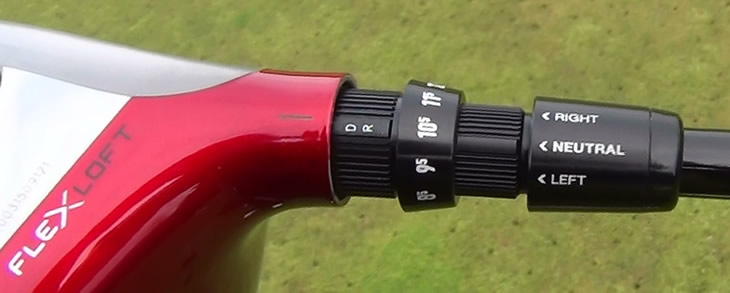
What is Loft in Golf Clubs?
Loft plays a crucial role in determining how high or low the ball will launch off the clubface. It refers to the angle between the clubface and a vertical plane. Generally measured in degrees, loft impacts the initial launch angle of the ball and affects the ball’s flight characteristics.
Loft as an Angle Measurement
The loft of a club is typically specified on the clubhead itself, indicating the angle between the clubface and the shaft. Different clubs, such as drivers, irons, and wedges, have varying loft angles to serve specific purposes throughout a golfer’s bag. Lower lofted clubs, like drivers, have smaller angles, resulting in lower initial launch angles and more distance. On the other hand, higher lofted clubs, such as wedges, have steeper angles, allowing for greater control and precision in shorter shots.
Loft and the Launch Angle of the Ball
The loft of a club directly influences the launch angle of the ball. A club with higher loft imparts more vertical force on the ball, causing it to launch at a higher angle. This results in a higher, softer ball flight with more backspin. Conversely, a club with lower loft produces a lower launch angle, leading to a flatter trajectory with less spin. Understanding how loft affects launch angle is fundamental to comprehending its impact on face angle.
What is Face Angle in Golf Clubs?
The face angle refers to the orientation of the clubface at impact, specifically the angle at which it points relative to the target line. It determines the initial direction the ball will take off the clubface and greatly influences the shot’s accuracy and shot shape.
Face Angle as an Angle Measurement
Similar to loft, face angle is measured in degrees. It represents the deviation of the clubface from a square position. A square face angle means the clubface is perpendicular to the target line, resulting in a straight shot. A face angle that is closed (pointing left of the target line for a right-handed golfer) tends to produce a draw or hook, while an open face angle (pointing right of the target line for a right-handed golfer) can lead to a fade or slice.
Face Angle and Ball Flight
The face angle plays a pivotal role in determining the initial direction of the ball. Even a slight variation in face angle can have a significant impact on the shot’s accuracy and shape. It is important to note that face angle primarily influences the starting direction of the ball, while other factors such as swing path and spin can further shape the ball’s flight.
How Changing Loft Impacts Face Angle
Now that we have a solid understanding of loft and face angle, let’s explore how adjusting loft can affect the face angle at impact. The relationship between these two factors is intertwined and altering one can have repercussions on the other.
Understanding the Loft-Adjustability of Golf Clubs
Many modern golf clubs, especially drivers and fairway woods, come with loft adjustability features. These mechanisms allow golfers to modify the loft angle of their clubs to fine-tune their shots based on specific course conditions, personal preferences, or desired ball flight characteristics. By making loft adjustments, golfers can indirectly influence the face angle and potentially enhance their performance on the course.
Loft Adjustments and Face Angle Relationships
When you increase or decrease the loft of a club, it can lead to changes in the face angle. However, the extent of the impact can vary based on several factors, including the design of the clubhead and the golfer’s swing mechanics. Let’s explore the effects of changing loft on face angle in more detail.
Effect of Increasing Loft on Face Angle
Increasing the loft of a club can often result in a more open face angle at impact. As you add loft, the clubface tends to rotate slightly towards an open position. This can lead to a greater tendency for the ball to start to the right (for right-handed golfers) if the swing path remains constant. Golfers who struggle with a slice may find that increasing the loft helps to square the face and reduce the degree of sidespin on the ball.
Effect of Decreasing Loft on Face Angle
Conversely, reducing the loft of a club can potentially result in a more closed face angle at impact. As loft decreases, the clubface tends to rotate towards a closed position. This can lead to a greater tendency for the ball to start to the left (for right-handed golfers) if the swing path remains unchanged. Golfers who tend to hook the ball excessively may benefit from reducing the loft to help mitigate the degree of hook spin.
It’s important to note that while changing loft can influence the face angle, it is not the sole determining factor. The golfer’s swing mechanics, including swing path and clubface control, play significant roles in shaping the face angle at impact. A skilled golfer with a consistent swing can effectively manage the face angle regardless of loft adjustments.
Factors Influencing Loft and Face Angle
Several factors come into play when considering the relationship between loft and face angle. Let’s explore two key factors: clubhead design and swing mechanics.
Clubhead Design
The design of the clubhead can greatly influence both loft and face angle characteristics. Manufacturers employ various techniques to optimize these factors and cater to different golfer preferences.
Clubhead Design and Loft
Clubheads with adjustable hosels allow golfers to change the loft angle independently of the face angle. By altering the hosel settings, golfers can fine-tune the loft to suit their desired ball flight. Additionally, different clubhead designs, such as cavity-back irons or low-profile drivers, can affect the loft characteristics and impact the face angle at address.
Clubhead Design and Face Angle
The face angle is influenced by the clubhead’s design and manufacturing tolerances. Some clubheads are designed with a slightly closed or open face angle to help golfers counter specific shot tendencies. For example, a clubhead with a slightly closed face angle may assist in reducing slices, while one with an open face angle can help promote a draw bias.
Swing Mechanics
The golfer’s swing mechanics have a profound impact on both loft and face angle. Here are some key swing factors that can affect the face angle at impact:
Swing Path and its Impact on Face Angle
The swing path refers to the direction the clubhead travels during the swing. It can be influenced by several factors, including grip, posture, and body rotation. The swing path relative to the target line can influence the face angle and determine the starting direction of the ball. A golfer with an out-to-in swing path (for right-handed golfers) is more likely to have an open face angle at impact, resulting in a fade or slice. Conversely, an in-to-out swing path can lead to a closed face angle, potentially resulting in a draw or hook.
Swing Speed and its Impact on Face Angle
Swing speed, or the velocity at which the clubhead travels through the impact zone, can affect the face angle at impact. Golfers with higher swing speeds may find it more challenging to consistently square the face, leading to potential variations in face angle. It is crucial for golfers to focus on maintaining control and stability throughout their swing to achieve a square face angle and maximize their ball-striking potential.
Impact Location and its Impact on Face Angle
The location on the clubface where the ball makes contact, known as the impact location, can also influence the face angle at impact. If the ball strikes the toe or heel of the clubface, it can result in the face angle being slightly open or closed, respectively. Golfers should strive for centered contact to optimize their ability to control the face angle and achieve consistent ball flight.
The Relationship between Loft, Face Angle, and Shot Shape
Understanding how loft and face angle interact can provide valuable insights into shot shape, which refers to the curvature of the ball’s flight. By manipulating loft and face angle, golfers can influence their shots to produce desired shot shapes.
Understanding Shot Shape
Two common shot shapes in golf are draws and fades.
Draw Shots
A draw is a shot that curves gently from right to left (for right-handed golfers). It is often characterized by a controlled, controlled right-to-left ball flight. A draw can provide added distance and control, especially when navigating dogleg fairways or setting up for approach shots into greens.
Fade Shots
A fade is a shot that curves gently from left to right (for right-handed golfers). It is typically a controlled, controlled left-to-right ball flight. A fade can be advantageous when aiming to avoid obstacles or when trying to land the ball softly on the green.
How Loft and Face Angle Affect Shot Shape
Both loft and face angle contribute to the creation of different shot shapes. Let’s explore their impact:
Relationship between Face Angle and Shot Shape
The face angle plays a primary role in determining the initial direction of the ball. A closed face angle will tend to promote a draw, while an open face angle will favor a fade. By manipulating the face angle at impact, golfers can encourage the desired shot shape.
Relationship between Loft and Shot Shape
The loft of a club affects the spin characteristics of the ball, which can further influence shot shape. Higher lofted clubs generally produce more backspin, which can enhance shot-stopping ability and promote a higher ball flight. Lower lofted clubs typically generate less spin, leading to a flatter trajectory and potentially more roll.
Combined Effects of Loft and Face Angle on Shot Shape
The combined effects of loft and face angle on shot shape can be powerful. For example, if a golfer desires a higher, controlled draw, they can adjust both the loft and face angle accordingly. By increasing the loft and closing the face angle slightly, they can achieve the desired shot shape with the optimal trajectory and spin characteristics.
Adjusting Loft and Face Angle for Desired Ball Flight
To optimize ball flight and achieve desired outcomes, golfers can make adjustments to loft and face angle based on their intended ball flight characteristics.
Understanding Desired Ball Flight
Every golfer may have different preferences and needs when it comes to ball flight. Understanding the following ball flight characteristics can help guide loft and face angle adjustments:
High Launch and Low Spin
Golfers aiming for a high launch with low spin typically seek maximum carry distance and softer landings on greens. This ball flight is often desirable in situations where carry over hazards or maximizing distance is critical.
Low Launch and High Spin
A low launch with high spin is beneficial when golfers want to maintain control, achieve a penetrating trajectory, and maximize spin, such as when playing in windy conditions or when needing to hit shots that stop quickly on firm greens.
Adjusting Loft and Face Angle to Achieve Desired Ball Flight
To achieve the desired ball flight, golfers can make specific adjustments to both loft and face angle. Here are some considerations:
Loft Adjustments for Different Ball Flights
- High Launch and Low Spin: To achieve a higher launch with lower spin, golfers can increase the loft of their clubs. This helps in generating more lift and promoting a higher initial launch angle. It can be particularly useful with drivers and fairway woods. Additionally, selecting clubs with a higher natural loft can contribute to achieving the desired ball flight.
- Low Launch and High Spin: Conversely, to achieve a lower launch with higher spin, golfers can decrease the loft of their clubs. This reduces the initial launch angle and promotes a flatter trajectory. It can be advantageous for precision shots, such as when hitting into greens or when trying to control distance.
Face Angle Adjustments for Different Ball Flights
- High Launch and Low Spin: To promote a higher launch with lower spin, golfers can slightly close the face angle at impact. This can help to reduce the dynamic loft and increase the launch angle. However, it is essential to maintain a neutral face angle to avoid excessive curvature or unintended shot shapes.
- Low Launch and High Spin: When aiming for a lower launch with higher spin, golfers can slightly open the face angle at impact. This can decrease the effective loft and promote a lower initial launch angle. Again, it is crucial to strike a balance to avoid significant shot curvature.
Combining Loft and Face Angle Adjustments for Desired Ball Flight
Golfers can optimize their ball flight by combining loft and face angle adjustments strategically. For example:
- High Launch with Low Spin and Draw: A golfer seeking a high launch with low spin and a gentle draw can increase the loft slightly and close the face angle slightly. This combination promotes the desired trajectory, spin, and shot shape.
- Low Launch with High Spin and Fade: On the other hand, a golfer aiming for a low launch with high spin and a controlled fade can decrease the loft slightly and open the face angle slightly. This helps achieve the desired trajectory, spin, and shot shape.
It’s crucial to experiment and fine-tune these adjustments to find what works best for individual swing tendencies and preferences. Professional club fitting sessions can provide valuable insights and recommendations based on a golfer’s unique characteristics.
Technological Advances in Loft and Face Angle Adjustability
Advancements in golf club technology have made it easier for golfers to customize their loft and face angle settings. These advancements offer greater flexibility and precision in optimizing club performance.
Adjustable Drivers and Fairway Woods
Many modern drivers and fairway woods come with adjustable features, allowing golfers to fine-tune loft and face angle settings. These adjustments are typically made through adjustable hosels or interchangeable weight systems.
- Hosel Adjustments for Loft and Lie: Adjustable hosels allow golfers to change the loft and lie angles of their clubs independently. By adjusting the hosel, golfers can increase or decrease the loft while maintaining the desired face angle. This customization empowers golfers to optimize their equipment for specific course conditions and swing tendencies.
- Adjustable Sole Weights for CG and Shot Shape: Some drivers and fairway woods feature adjustable sole weights. By repositioning these weights, golfers can influence the club’s center of gravity (CG) location and fine-tune shot shape tendencies. This can further enhance the effects of loft and face angle adjustments, allowing for even more precise customization.
Custom Fitting and Loft/Face Angle Optimization
Custom fitting is a valuable process for golfers looking to optimize their loft and face angle settings. Working with a professional club fitter can provide invaluable insights and recommendations based on an individual’s swing characteristics, ball flight tendencies, and overall goals.
- Importance of Custom Fitting: Custom fitting ensures that golfers are using clubs that are tailored to their specific needs and swing dynamics. It takes into account factors such as swing speed, tempo, angle of attack, and release patterns to determine the ideal loft and face angle settings. By undergoing a custom fitting session, golfers can maximize their performance and achieve consistent results on the course.
- Professional Club Fitting Process: During a custom fitting session, a club fitter will analyze various aspects of a golfer’s swing using advanced launch monitors and fitting tools. This data helps in identifying the optimal loft and face angle settings that promote the desired ball flight characteristics. The club fitter may make adjustments to clubheads, shafts, and grips, ensuring the golfer’s equipment is perfectly suited to their game.
Through custom fitting, golfers can unlock the full potential of their clubs by ensuring that the loft and face angle are precisely calibrated to their swing characteristics. This personalized approach leads to improved performance, increased consistency, and enhanced enjoyment of the game.
Conclusion
Understanding the relationship between loft and face angle is essential for any golfer striving to optimize their ball flight and shot accuracy. By adjusting loft and face angle, golfers can influence launch angle, spin rates, and shot shape tendencies. It’s important to remember that loft adjustments can indirectly affect face angle, and vice versa. Additionally, factors such as clubhead design, swing mechanics, and impact location contribute to the interplay between loft and face angle.
To achieve desired ball flights, golfers can make strategic adjustments to loft and face angle. Higher loft promotes a higher launch and increased spin, while lower loft produces a lower launch and reduced spin. The face angle influences the initial direction of the ball, with a closed face angle promoting a draw and an open face angle favoring a fade.
Technological advancements in adjustable drivers and fairway woods offer golfers the ability to fine-tune loft and face angle settings. Custom fitting further enhances loft and face angle optimization by tailoring the clubs to the golfer’s unique swing characteristics.
By mastering the relationship between loft and face angle, and leveraging technology and customization, golfers can gain greater control, precision, and consistency in their shots. So, the next time you step onto the tee, be mindful of the loft and face angle dynamics, and watch as your shots soar with improved accuracy and distance. Happy golfing!

